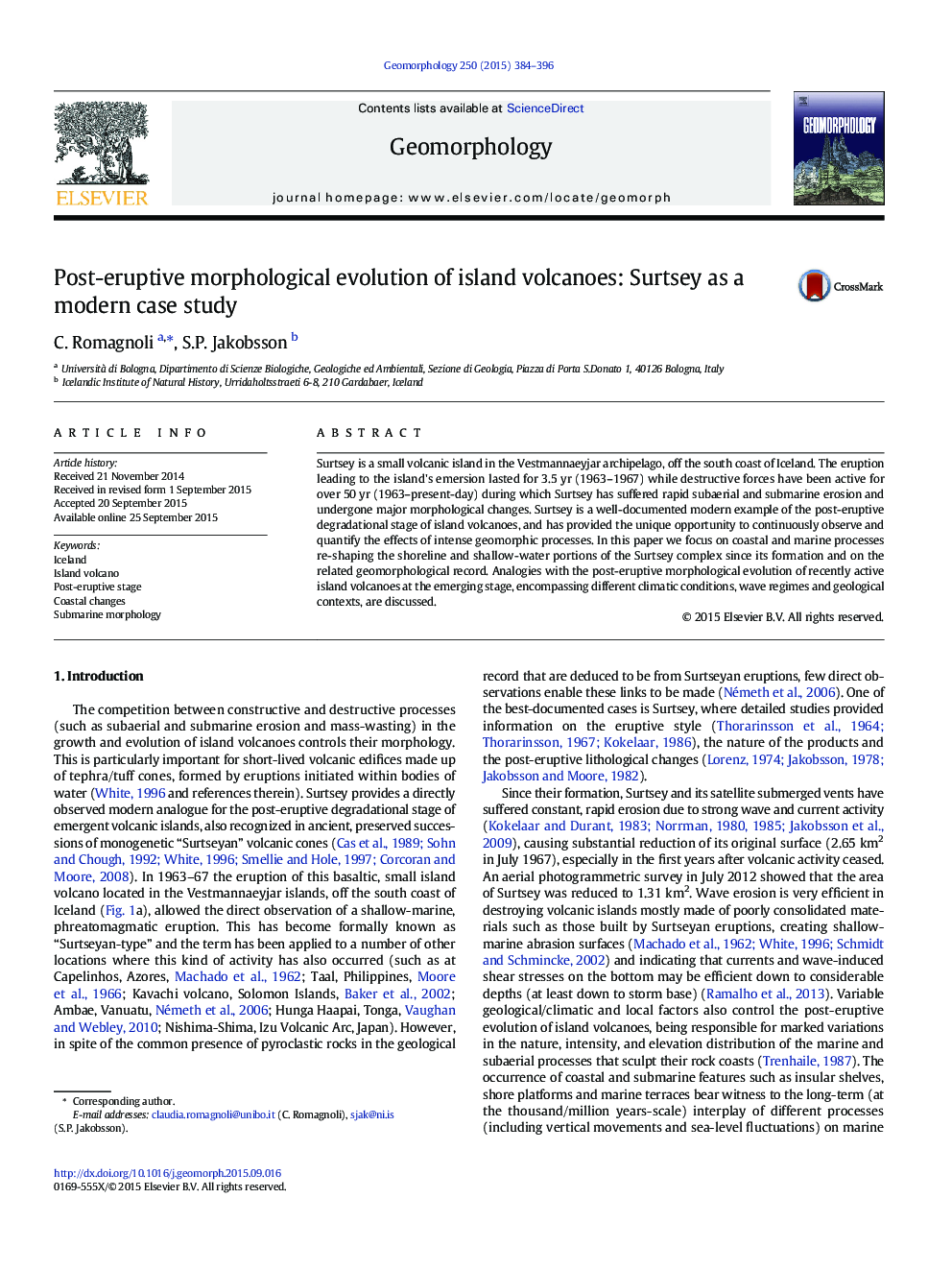| کد مقاله | کد نشریه | سال انتشار | مقاله انگلیسی | نسخه تمام متن |
|---|---|---|---|---|
| 6431824 | 1635399 | 2015 | 13 صفحه PDF | دانلود رایگان |

- Volcanic activity at Surtsey (Iceland) ceased 3.5Â yr after its emersion.
- The post-eruptive degradational stage has been documented at the 50-year scale.
- Coastal and marine processes re-shaped the shoreline and shallow-water portions.
- Erosion rates were very high in the first decades then slowed down.
- The present morphology reflects the interplay of erosive and depositional processes.
Surtsey is a small volcanic island in the Vestmannaeyjar archipelago, off the south coast of Iceland. The eruption leading to the island's emersion lasted for 3.5Â yr (1963-1967) while destructive forces have been active for over 50Â yr (1963-present-day) during which Surtsey has suffered rapid subaerial and submarine erosion and undergone major morphological changes. Surtsey is a well-documented modern example of the post-eruptive degradational stage of island volcanoes, and has provided the unique opportunity to continuously observe and quantify the effects of intense geomorphic processes. In this paper we focus on coastal and marine processes re-shaping the shoreline and shallow-water portions of the Surtsey complex since its formation and on the related geomorphological record. Analogies with the post-eruptive morphological evolution of recently active island volcanoes at the emerging stage, encompassing different climatic conditions, wave regimes and geological contexts, are discussed.
Journal: Geomorphology - Volume 250, 1 December 2015, Pages 384-396